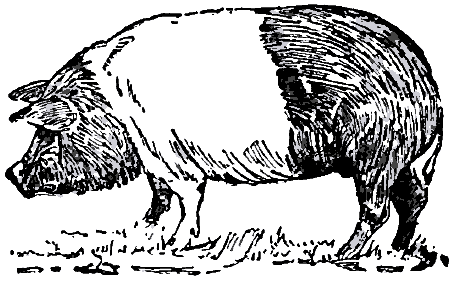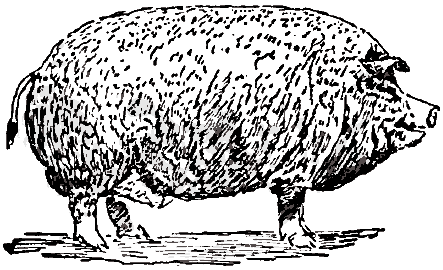Collier's New Encyclopedia (1921)/Hog
HOG, in zoölogy, Sus scrofa. It has two large teeth or tusks in the upper, and two in the lower, jaw. The body is covered with bristles. When wild it is of a dark brindled hue, with soft short hairs beneath its bristles. In domestication the ears become long, sharp-pointed, and pendent. The hog when wild feeds on beech-mast, chestnuts, acorns, crabs, haws, sloes, hips, grass, and roots. There are many breeds of hogs, as the Chinese, the Suffolk, the Berkshire, the Shropshire, the Northampton, the Neapolitan, etc. The point aimed at, is to make the animal quickly increase in flesh without increasing in bone. Their period of gestation is about four months; they begin to breed at the age of 18 months to two years, do so twice in a year, and bring forth from 5 to 10, or more, at a time. The hog is wild in Continental Europe, many parts of Asia, and in north Africa. The horned hog, or babiroussa, is a native of the Indian archipelago. Its upper tusks are very long and curve backward. It has long legs and the flesh is good eating.




